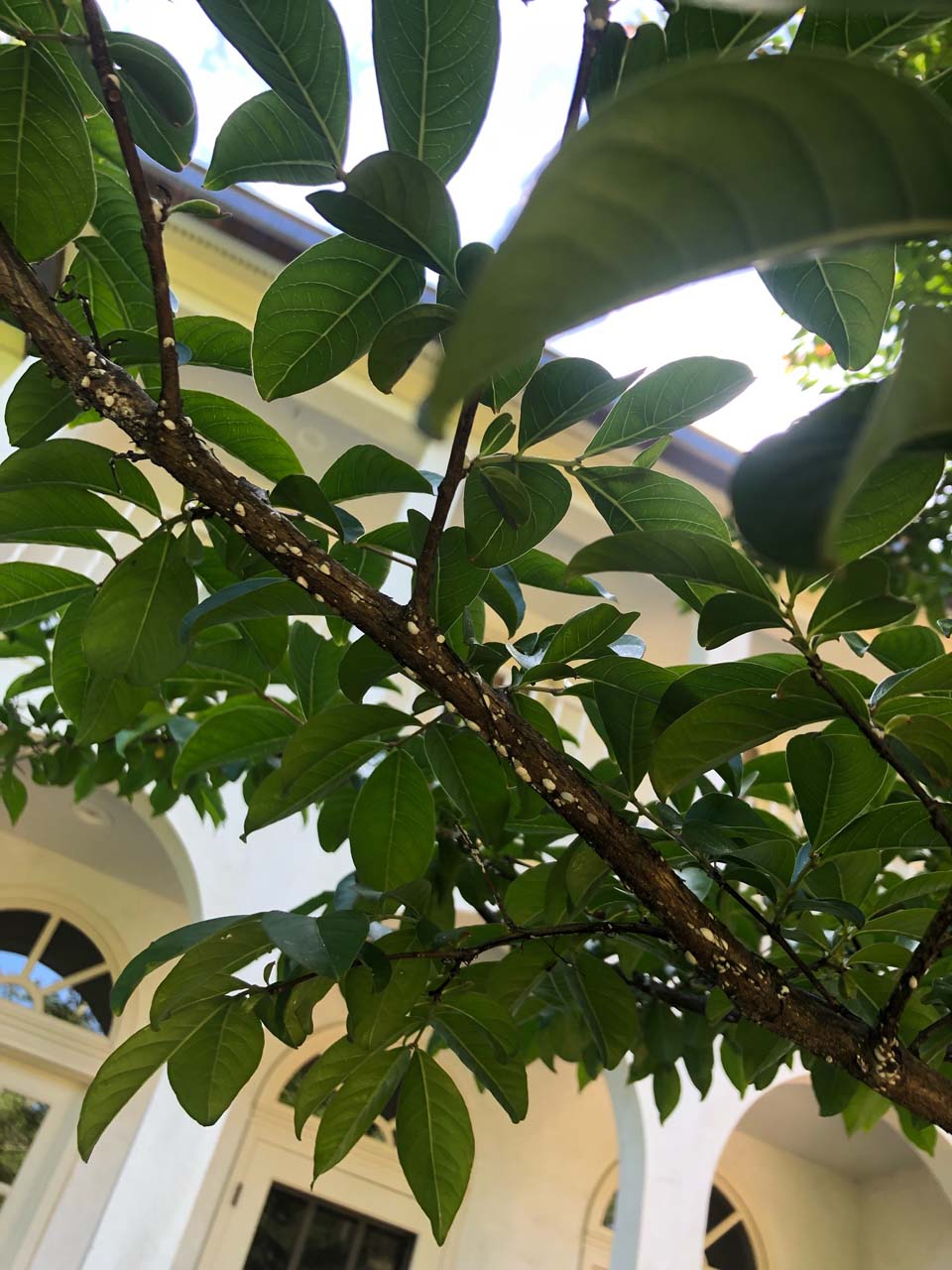August 10, 2023
We have received a lot of calls in recent weeks regarding Crape Myrtle Bark Scale. Despite being a relatively new pest to the Richmond area (within the last two years), Crape Myrtle Bark Scale is shaping up to be a formidable foe to our beloved Crape Myrtles, and we definitely understand why you’re concerned if you find it on your property! Thankfully, research related to treatment methods and efficacy has advanced quite a bit over the last two years, and we are proud to be using the most advanced systemic bark-applied treatment method available to eliminate this highly invasive pest.
Unlike foliar canopy sprays – which have to be re-applied at 3-4 week intervals and create a lot of pesticide drift and over-spray – our treatment works for the duration of the growing season and is applied directly to the bark, where it is then translocated through the tree’s vascular system into the upper limits of the canopy. This treatment method is not only preferable to foliar canopy sprays for its reduced impact on the surrounding environment, but it also saves you money by eliminating the need to repeatedly treat the same tree over the course of the growing season.
Naturally, we’re sure you still have some questions, so we have compiled a list of the top 10 questions that we are receiving here in the office:
- What is the best treatment for Crape Myrtle Bark Scale? There is a lot of mis-information on the internet on the best way to treat this aggressive pest. The best and most effective treatment based on scientific research is a bark applied systemic. Other methods – such as using horticultural oil or dish soap and water – are not effective methods for eradicating this pest.
- How often do I need to treat for this scale? In most cases, a single bark-applied systemic application during the growing season will provide be adequate protection for the entire growing season.
- What are the white fuzzy bugs moving all over the tree? The white fuzzy insects that you can see moving on the bark are NOT Crape Myrtle Bark Scale. They are young beneficial beetle larvae that are feeding on the scale.
- Why is the bark peeling more? Is that normal? It is normal for the bark to exfoliate on Crape Myrtles, but they will tend to peel more with a heavy infestation because they like to burrow underneath the loose bark. It is NOT recommended to peel the bark off of the trees, which in some cases will cause unnecessary wounds to the trunk.
- How do I get the black sooty mold off of the Crape Myrtle and surrounding plants? For the Crape Myrtles themselves, natural weathering and shedding will remove the sooty mold over time. It is NOT recommended to power wash or scrub the bark, especially after treatment is applied.
- Should I scrub the scales off of the tree? No! If we’re performing a bark-applied treatment, brushing will eliminate some of the benefits of the treatment.
- Will the scales disappear after treatment? You will see the shell of the white scales after treatment. They are like little barnacles, firmly attached to the tree. They will desiccate and wash away naturally over time.
- Do you have to spray the whole tree? No! Fortunately, we only need to treat the lower portion of the trunk for effective control. As an added benefit, this is much more environmentally friendly than performing a canopy foliar spray due to reduced pesticide drift.
- How does just one bark application get to the scale on the higher branches? The treatment is translocated through the vascular tissue of the tree, where it is pulled up to the tips of the branches in about 1-2 weeks.
- Why are my Crape Myrtles not blooming? While the scale may be contributing to Crapes in our area not blooming as well or as early as normal, there are other more important weather-related factors that are more likely to be the cause.
